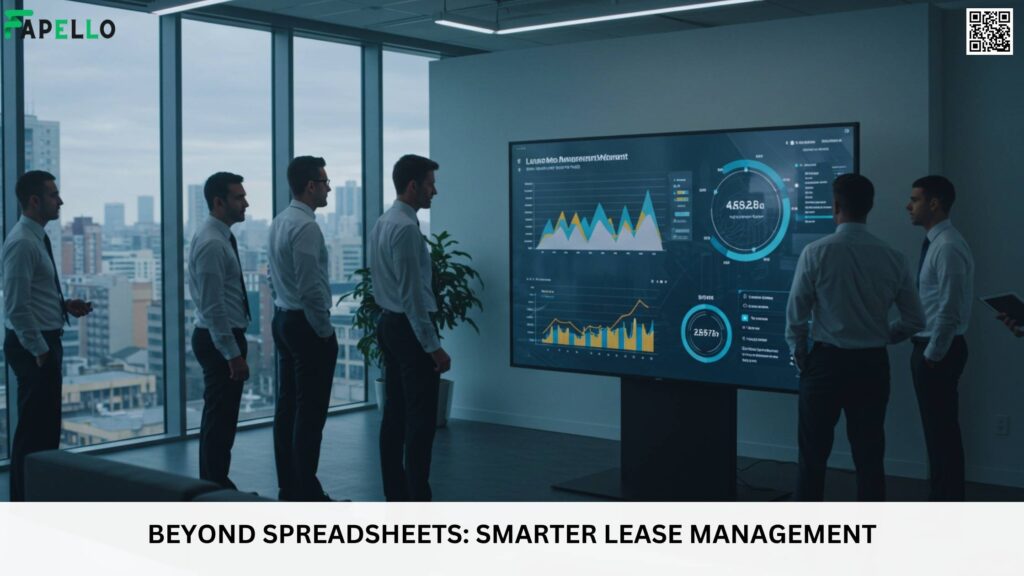For many growing companies, lease management starts with a simple spreadsheet. It’s fast, cheap, and familiar. But as operations scale, lease portfolios get more complex—and what once worked for five or ten agreements can quickly become a liability. Deadlines get missed. Terms get overlooked. Financial reporting turns into a guessing game.
That’s why businesses reaching the next stage of growth are moving beyond manual tracking. Smarter lease management tools not only save time, they help ensure compliance, support better decision-making, and protect financial transparency in a way spreadsheets simply can’t match.

Why Spreadsheets Fall Short
Spreadsheets are useful tools. They’re customizable and easy to set up. But lease accounting isn’t a static process—it changes over time with contract amendments, renewals, remeasurements, and evolving compliance rules. Spreadsheets weren’t designed to handle that kind of complexity. Here are a few of the most common issues companies run into:
- Human error: A wrong formula, a missing row, or a copy-paste mistake can lead to serious misreporting.
- Version control: Multiple team members working on different versions means data can become outdated fast.
- Lack of automation: Payments, renewal dates, and alerts must be tracked manually.
- Compliance risk: Regulations like IFRS 16 and ASC 842 require structured reporting and precise calculations—manual tools leave more room for mistakes.
According to a LeaseAccelerator study, 78% of companies said managing lease data in spreadsheets was either difficult or very difficult, especially under newer lease accounting standards.
When It’s Time to Upgrade
Lease management software isn’t just for large corporations. Even companies with 10 to 20 leases benefit from a system that handles:
- Payment scheduling
- Contract lifecycle management
- Compliance reporting
- Alerts and deadline tracking
- Integration with financial systems
If your company is expanding locations, signing equipment leases, or simply struggling to keep contracts organized, it’s a sign that spreadsheets have outlived their usefulness.
Features to Look for in Lease Management Software
As more businesses adopt lease automation tools, the options have expanded. But not every tool fits every business. Here’s what to look for:
- IFRS 16 and ASC 842 compliance: Make sure your system helps you follow the accounting rules relevant to your region and industry. This includes automatic classification, amortization schedules, and audit trails.
- Centralized contract storage: Keep all lease agreements, renewals, and modifications in one place with easy search and access.
- Automated alerts: Get notifications for renewal windows, expirations, and rate changes.
- Audit-ready reporting: Export standardized reports that your finance team or auditors can use without manual reformatting.
- User permissions: Allow different team members to view or edit contracts based on their roles.
A solution like IFRS 16 software is designed for companies that need to manage leases while staying compliant with evolving international standards. These platforms often integrate with ERP systems, so you’re not juggling multiple data sources or entry points.
Lease Management and Business Strategy
Smarter lease tracking isn’t just about paperwork—it’s part of your growth strategy. Accurate data supports better decisions: whether to renew a location, upgrade equipment, or negotiate terms. Good systems also reveal hidden costs, like underused assets or auto-renew clauses that no longer fit your business model.
Here’s how companies use lease data as a strategic tool:
- Identify cost-saving opportunities by spotting patterns across lease terms.
- Plan for expansion by understanding lease commitments and expirations.
- Improve vendor relationships with data-backed negotiations.
- Avoid duplicate costs by flagging overlapping contracts.
Key Benefits at a Glance
Let’s break it down in one quick list:
- Reduced manual work
- Fewer compliance risks
- Faster reporting
- Better visibility of all leases
- Smoother audits
- Stronger long-term planning
Explore: https://fapello.org.uk/fapello-su/
Final Thoughts
As your business grows, so does the need for clarity in how leases are managed and reported. Spreadsheets may get you started, but they’re not built to scale with today’s accounting requirements or the speed of modern business. Whether it’s staying compliant with IFRS 16 or simply knowing when to renegotiate, smarter lease management puts you in control.
When time, accuracy, and financial clarity matter, investing in the right tools isn’t just a convenience—it’s a necessity.
Source: https://fapello.org.uk/






